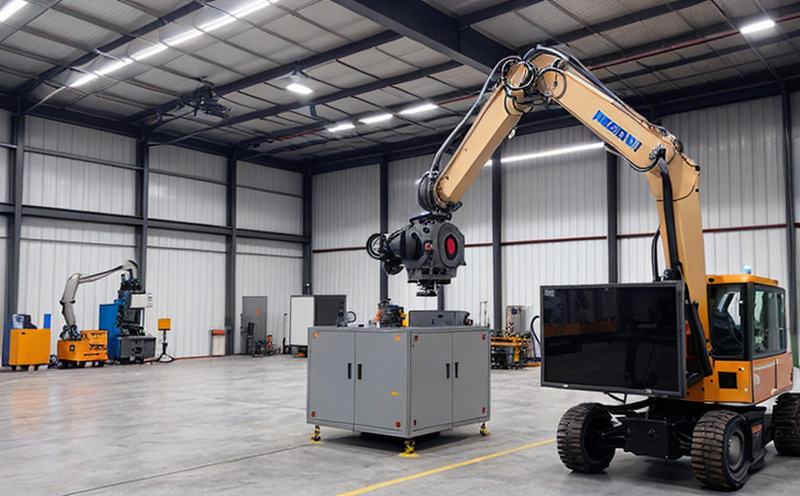IEC 62998 Safety Functions of Collaborative Robot Applications
The International Electrotechnical Commission (IEC) standard IEC 62998 is pivotal in ensuring the safety and reliability of collaborative robotic systems. These robots are designed to work alongside human operators, enhancing productivity while minimizing risks associated with industrial robotics.
IEC 62998 specifically addresses the safety functions required for collaborative robot applications (cobots). The standard focuses on the interaction between humans and cobots in shared working environments, emphasizing the need for robust safety systems that prevent accidents. This includes the design of protective measures, monitoring systems, and fail-safe mechanisms.
The standard applies to various types of robotic systems used in industrial and manufacturing settings where human-robot collaboration is essential. It covers both fixed and mobile robots and their interaction with humans. The scope extends beyond the robot itself to include interfaces, control systems, and safety-related software that ensure safe operation.
Compliance with IEC 62998 is crucial for manufacturers of collaborative robotic systems looking to meet international standards and gain market access. It helps them design products that not only meet regulatory requirements but also enhance the overall safety culture within industrial environments.
The standard provides a framework for evaluating the safety functions of cobots, which includes assessing their ability to detect human presence, respond appropriately, and ensure that any interaction is controlled and safe. This involves rigorous testing of various aspects such as proximity sensors, emergency stop mechanisms, and force monitoring systems.
Manufacturers must ensure that their cobots can autonomously identify potential hazards and take corrective actions without compromising the safety of human workers. Testing under IEC 62998 helps verify that these safety functions are implemented correctly and consistently across different models and applications.
The standard also emphasizes continuous improvement in robotic technology, encouraging manufacturers to adopt new innovations while maintaining a high level of safety. This includes regular updates to software and hardware components to address emerging risks and enhance overall performance.
In summary, IEC 62998 plays a critical role in shaping the future of industrial robotics by promoting safe human-robot interaction. Compliance ensures that manufacturers deliver reliable, efficient, and most importantly, safe robotic systems capable of coexisting with humans in shared workspaces.
Applied Standards
| Standard Name | Year of Publication | Scope |
|---|---|---|
| IEC 62998-1:2015 | 2015 | Safety functions of collaborative robot applications - Part 1: General requirements |
| IEC 62998-2:2017 | 2017 | Safety functions of collaborative robot applications - Part 2: Testing and validation |
The IEC standards ensure that the testing procedures for safety functions are consistent with global best practices. These parts provide comprehensive guidance on how to assess various aspects of robotic safety, including physical proximity, force limits, and detection mechanisms.
Scope and Methodology
| Test Area | Methodology Description |
|---|---|
| Proximity Detection | Testing involves simulating human proximity to the robot and assessing the robot's response time. This ensures that the robot can detect humans within safe distances and respond appropriately. |
| Force Monitoring | The system is subjected to controlled force applications to evaluate its ability to limit maximum contact forces between human operators and the robotic components. This prevents injuries during interactions. |
The methodology employed in IEC 62998 testing is designed to simulate real-world scenarios where human-robot collaboration occurs. This includes setting up controlled environments that mimic typical industrial settings, ensuring that the tests accurately reflect the conditions under which these robots will operate.
Testing procedures involve multiple iterations and refinements based on feedback from initial assessments. Continuous evaluation allows for the identification of potential issues early in the development process, enabling manufacturers to make necessary adjustments before product release.
The testing also includes validation checks at various stages of the robotic lifecycle, from design through production and deployment. This comprehensive approach ensures that the safety functions remain effective throughout the robot's operational life, adapting as needed due to environmental changes or technological advancements.
Eurolab Advantages
At Eurolab, we specialize in providing top-tier testing services for IEC 62998 compliance. Our state-of-the-art facilities and experienced technicians ensure that you receive accurate and reliable results every time.
Our team of experts has extensive experience in industrial robotics, allowing us to offer tailored solutions that meet your specific needs. We stay updated with the latest developments in IEC standards, ensuring our testing processes are always aligned with current regulations.
We provide a range of services including initial assessments, detailed reports, and training sessions for your staff on how best to comply with IEC 62998. Our commitment to excellence is reflected not only in the quality of our tests but also in our transparent communication throughout the testing process.
Choosing Eurolab means choosing a partner dedicated to helping you achieve compliance while enhancing your product's safety and reliability. With us, you can focus on innovation knowing that your robotic systems meet stringent international standards.





